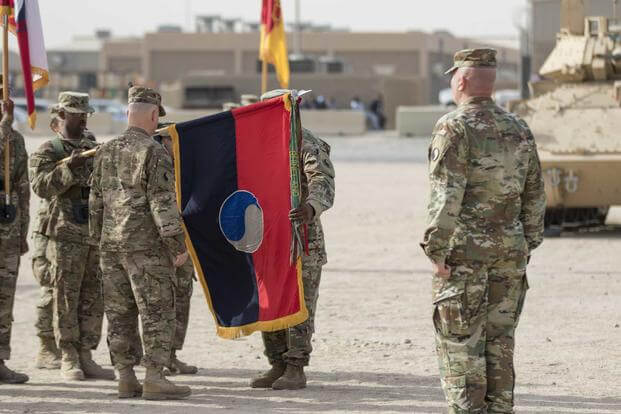The Army National Guard will get to keep its famed 29th Infantry Division patch with references to the Confederacy after a review from a commission established by Congress to consider removing references tied to Southern rebels used by the military.
Military.com reported in December that the storied division, known for its legendary battle storming the beaches of Nazi-occupied France in 1944, had its patch on the chopping block. The patch, introduced during World War I, is a blue and gray yin and yang, referencing the merger of old Union and Confederate units and soldiers with family ties to the Confederacy joining the ranks.
The 29th Infantry Division is headquartered at Fort Belvoir, Virginia, and is the major formation for that state's National Guard and one of the most high-profile elements of the service component. It also has formations in the Maryland, West Virginia, North Carolina and Florida National Guards.
Read Next: National Guard Rescues Hundreds Amid Flooding in Kentucky; 37 Dead
"The Commission believes that identifying the symbol of the 29th Infantry Division patch as a Confederate symbol is a subjective determination," Stephen Baker, a spokesman for the commission, said in a statement Monday.
However, the Army will likely have to remove a heraldry description referencing rebel service. Currently, the Institute of Heraldry's description of the patch reads: "In 1919, when shoulder sleeve insignia were first authorized, the division was composed of two masses of men, one from the North and the other from the South. Therefore, the North is represented by the blue and the South by the gray."
That suggestion was welcomed by senior leaders of the division.
"This is an opportunity for us to update the heraldry description to reflect not just the 29th's remarkable service in World War I and World War II, but also through the Cold War and over the last 20 plus years in the Global War on Terror," Maj. Gen. Timothy Williams, the adjutant general of the Virginia National Guard, said in a press release.
The commission also recommended nine Army bases that honor Confederate officers who led troops in armed conflict against the federal government be renamed, such as Fort Bragg, North Carolina, and Fort Hood, Texas. The commission is set to submit a full report to Congress by Oct. 1, after reviewing hundreds of Confederate references across the force, with the goal of making changes by the end of 2024.
-- Steve Beynon can be reached at Steve.Beynon@military.com. Follow him on Twitter @StevenBeynon.
Related: 1,000 National Guard Soldiers to Deploy to Africa as Mid East Wars Wind Down













